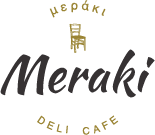
Embracing Greek Pasta: A Mediterranean Culinary Gem
Share
Mediterranean cuisine is celebrated for its rich tapestry of flavours, and when it comes to pasta, the Greeks have a unique and delightful contribution that sets them apart. Greek pasta, often referred to as "hilopites" or "kritharaki," brings a distinctive twist to traditional Mediterranean pasta dishes. In this blog post, we'll explore what makes Greek pasta stand out from its Mediterranean counterparts, and why it's a fantastic choice for home cooks.
The Key Difference: Greek Pasta Varieties
Greek pasta boasts an array of unique shapes and sizes that differ from traditional Italian pasta. Some popular types include "kritharaki," small rice-shaped pasta, and "hilopites," wide, square-cut noodles. These diverse shapes not only lend themselves well to various dishes but also offer an intriguing texture and appearance, setting them apart from the more familiar pasta shapes of Italy.
Durum Wheat: The Greek Pasta Secret
The quality of pasta is closely linked to the type of wheat used. Greek pasta is traditionally made from durum wheat semolina, renowned for its high protein content and gluten strength. This not only results in pasta with a satisfying bite but also means that it retains its shape and texture when cooked, making it an excellent choice for soups and baked dishes.
Versatility in Greek Pasta Dishes
Greek pasta's versatility shines in an array of delightful dishes. From the iconic Pastitsio, a layered baked pasta dish with a creamy béchamel sauce, to traditional soups like "Youvetsi" or hearty stews, Greek pasta takes on flavors and textures in a unique and satisfying way. The variety in shapes allows for creativity in the kitchen, making it a versatile ingredient that can be used in both classic and innovative recipes.
Ideal for One-Pot Cooking
Greek pasta's ability to hold up in soups and stews without turning mushy is a significant advantage. It can absorb flavors while maintaining its delightful texture, making it perfect for one-pot dishes. The result is a harmonious blend of Mediterranean flavors in every bite.
The Health Benefits of Greek Pasta
Using durum wheat semolina provides Greek pasta with essential nutrients, such as fiber, protein, and various vitamins and minerals. Its low glycemic index ensures steady energy levels, and it's an excellent source of complex carbohydrates, making it a healthy choice for those looking to enjoy pasta while maintaining a balanced diet.
Check Out This Awesome Greek Pasta Bake Recipe
Greek pasta's unique shapes, durum wheat semolina, versatility, and health benefits make it a standout choice for both Mediterranean cuisine enthusiasts and home cooks looking to add a touch of Greek authenticity to their dishes. Whether you're making a comforting soup, a hearty stew, or a layered pasta casserole, Greek pasta offers a delightful and nutritious option that will elevate your culinary creations. So, the next time you're in the kitchen, consider adding a Greek twist to your Mediterranean pasta repertoire, and savour the distinctive charms of Greek pasta.
